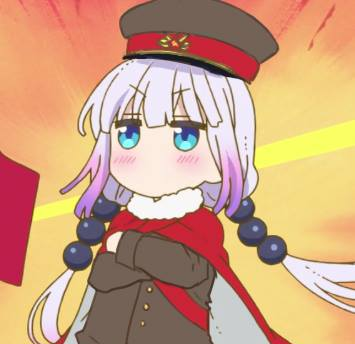there’s some excerpt of a letter in Zinn’s Peoples’ History around the time of the big canal digging projects of the northeast and it specifically mentions, from a place of shocked elite fear, about how crucial it is to keep the indentured Irish work teams away from the enslaved African teams.
there was this bafflement at how these peoples were so different in appearance and had a language barrier, but were easily finding camaraderie so steps needed to be taken to divide them and actively discourage social mingling.
Oo if you have a link or source id really appreciate it that sounds pretty interesting!
Here ya go (the second letter is the one previously mentioned):
Relevant excerpt from Howard Zinn's 'A People's History of the United States'
The instances where poor whites helped slaves were not frequent, but sufficient to show the need for setting one group against the other. Genovese says:
The slaveholders . . . suspected that non-slaveholders would encourage slave disobedience and even rebellion, not so much out of sympathy for the blacks as out of hatred for the rich planters and resentment of their own poverty. White men sometimes were linked to slave insurrectionary plots, and each such incident rekindled fears.
This helps explain the stern police measures against whites who fraternized with blacks. Herbert Aptheker quotes a report to the governor of Virginia on a slave conspiracy in 1802: “I have just received information that three white persons are concerned in the plot; and they have arms and ammunition concealed under their houses, and were to give aid when the negroes should begin.” One of the conspiring slaves said that it was “the common run of poor white people” who were involved.
In return, blacks helped whites in need. One black runaway told of a slave woman who had received fifty lashes of the whip for giving food to a white neighbor who was poor and sick.
When the Brunswick canal was built in Georgia, the black slaves and white Irish workers were segregated, the excuse being that they would do violence against one another. That may well have been true, but Fanny Kemble, the famous actress and wife of a planter, wrote in her journal:
But the Irish are not only quarrelers, and rioters, and fighters, and drinkers, and despisers of [N-words]—they are a passionate, impulsive, warm-hearted, generous people, much given to powerful indignations, which break out suddenly when not compelled to smoulder sullenly—pestilent sympathizers too, and with a sufficient dose of American atmospheric air in their lungs, properly mixed with a right proportion of ardent spirits, there is no saying but what they might actually take to sympathy with the slaves, and I leave you to judge of the possible consequences. You perceive, I am sure, that they can by no means be allowed to work together on the Brunswick Canal.
The need for slave control led to an ingenious device, paying poor whites—themselves so troublesome for two hundred years of southern history—to be overseers of black labor and therefore buffers for black hatred.
edit: in case it’s helpful, this quote occurs a few pages into Chapter 9: “Slavery Without Submission, Emancipation Without Freedom” (can’t give a page number or anything because I’ve got an EPUB)
Page 176 (2015 edition)
I got a paperback copy
damn, nice find. it was like 15 years ago that i read that (in a physical book), and i was trying to find it on the Zinn site and looking all the way back at the 17th century chapter on early slavery, which has similar stories but wasn’t the one i was looking for (the one you found). but anyway, here’s another cool bit:
Chapter 2: Drawing the Color Line
From time to time, whites were involved in the slave resistance. As early as 1663, indentured white servants and black slaves in Gloucester County, Virginia, formed a conspiracy to rebel and gain their freedom. The plot was betrayed, and ended with executions. Mullin reports that the newspaper notices of runaways in Virginia often warned “ill-disposed” whites about harboring fugitives. Sometimes slaves and free men ran off together, or cooperated in crimes together. Sometimes, black male slaves ran off and joined white women. From time to time, white ship captains and watermen dealt with runaways, perhaps making the slave a part of the crew.
In New York in 1741, there were ten thousand whites in the city and two thousand black slaves. It had been a hard winter and the poor—slave and free—had suffered greatly. When mysterious fires broke out, blacks and whites were accused of conspiring together. Mass hysteria developed against the accused. After a trial full of lurid accusations by informers, and forced confessions, two white men and two white women were executed, eighteen slaves were hanged, and thirteen slaves were burned alive.
Only one fear was greater than the fear of black rebellion in the new American colonies. That was the fear that discontented whites would join black slaves to overthrow the existing order. In the early years of slavery, especially, before racism as a way of thinking was firmly ingrained, while white indentured servants were often treated as badly as black slaves, there was a possibility of cooperation. As Edmund Morgan sees it:
There are hints that the two despised groups initially saw each other as sharing the same predicament. It was common, for example, for servants and slaves to run away together, steal hogs together, get drunk together. It was not uncommon for them to make love together. In Bacon’s Rebellion, one of the last groups to surrender was a mixed band of eighty negroes and twenty English servants.
As Morgan says, masters, “initially at least, perceived slaves in much the same way they had always perceived servants… shiftless, irresponsible, unfaithful, ungrateful, dishonest…” And “if freemen with disappointed hopes should make common cause with slaves of desperate hope, the results might be worse than anything Bacon had done.”
White people: “WHITE PEOPLE WERE SLAVES TOO!! SHOULD EVERY IRISH PERSON DEMAND THE BRITISH PAY REPARARATIONS FOR CRIMES THEY COMMITTED CENTURIES AGO?”
“…yes
 ”
”A big part of how indentured servitude was replaced with chattel slavery involved things like land being provided to white former indentured servants as part of establishing a larger white property-owning class to entrench the new system of racialized slavery, so in practical terms many of the Irish indentured servants in the Americas got their reparations centuries ago.
In contrast former slaves were suppressed, subject to hyper-exploitation from new systems that aimed to recreate chattel slavery as much as possible, and terrorized with both legal and illegal violence from state and paramilitary actors, and these things have been ongoing to one extent or another for over 150 years now.
Both of those different approaches were used to reinforce the concept of whiteness and establish the cult of white supremacy as hegemonic in the US and globally. Sort of like the practice of emancipating and adopting the most loyal and skilled slaves even as arbitrary and indiscriminate terror was applied to slaves as a class in antiquity but scaled up to an almost industrial level, making the most conformist white workers into yeoman farmers whose material interests suddenly align more with other property owners while at the same time applying arbitrary and indiscriminate terror to black slaves and former slaves. Thus workers get divided, cronies get empowered, and hyper-exploitation is enabled through violence and systemic exclusion and othering.
Ireland on the other hand should get reparations from the UK because of the centuries of violence and extraction the UK has imposed upon it. But that’s distinct from indentured servitude in the Americas.
Mark my words, soon CHUDs are going to kick Irish people out of the white people club again.
Bringing us back to Tucker Carlson’s “legacy Americans” screed. Why are those Irish people in Ireland so bad when I can’t do race science and also Irish Americans are chuds like me too? Well because they just aren’t respectable legacy Americans of course!
Considering that my ‘background’ won’t fit the bill for legacy American, My
 ass being called not a “real American” is the ultimate compliment. Thank you Tucc.
ass being called not a “real American” is the ultimate compliment. Thank you Tucc.
My theory is that Zionists are extra mad at Irish people because they’re a prominent example of a group being let into the White club and not immediately turning into a bunch of genocidal colonial settlers.
Pretty telling that they see themselves as colonizers either way.
proudly refer to myself as settler
proudly identify with american colonists
proudly identify with british imperialists
proudly identify with white south africans
gets mad when someone calls me pro-apartheid settler-colonist
Memes you make when you are definitely not just the most recent in a string of anglophone colonial projects.
Starting to think jewdank should have stayed as a porn sub.
ohhhh right
To be fair to the zionists knowing fuck all about history is a big part of the deal
Hibernian brainpan










